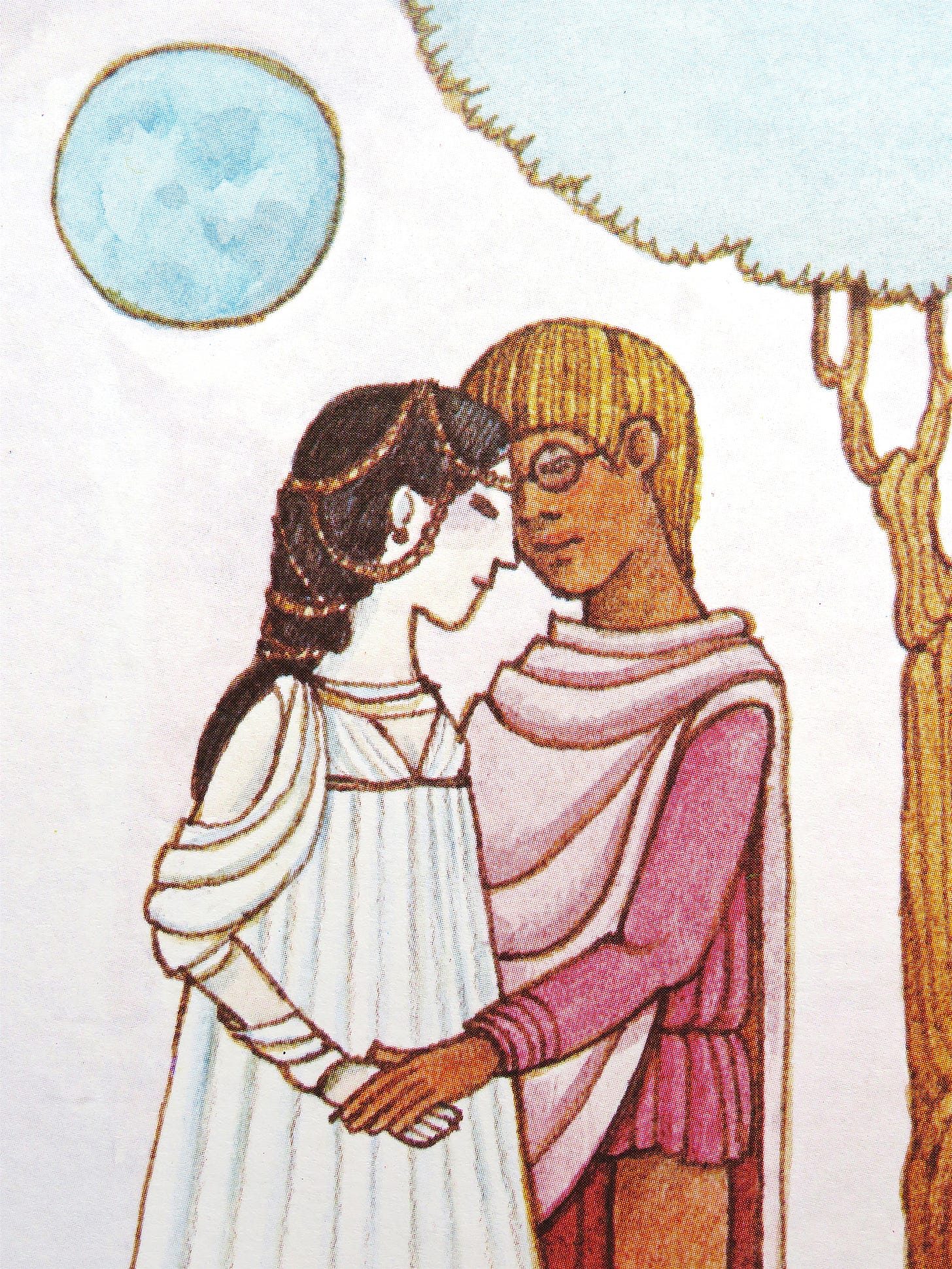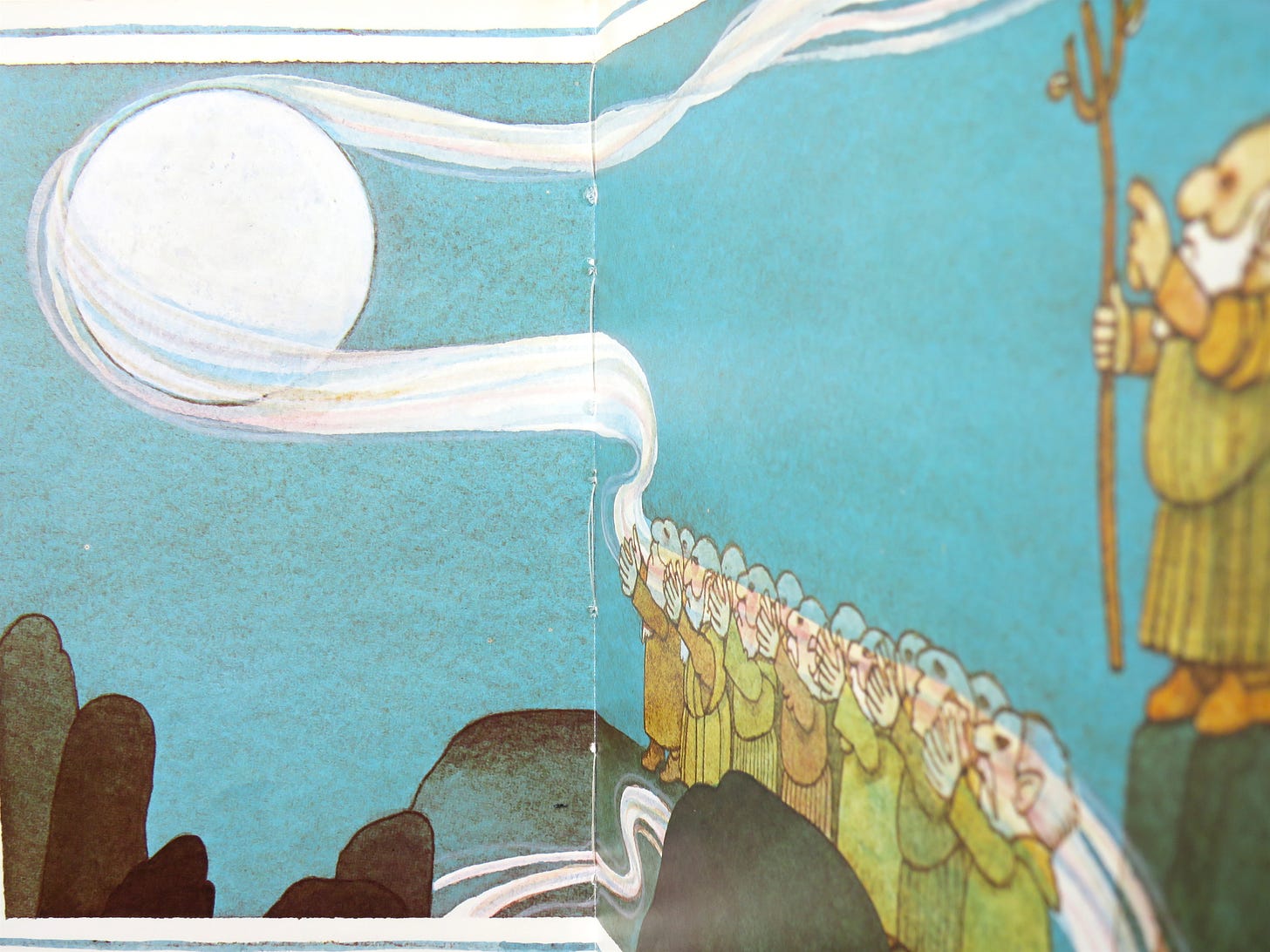The Prince of the Dolomites is an old Italian folktale that recounts how Italy’s Monti Pallidi—its “pale mountains”—got their famous colors. One of my favorite books of all time is an enchanting French-language rendition of this tale illustrated by the inimitable Tomie de Paola:
As the story opens, we’re introduced to young Prince Solatio. A strange boy with an inexplicable fixation on the moon, he lives with his family in a castle nestled in the dark Dolomite Mountains.
Years pass; the boy comes of age to marry. Following a fruitless search for a suitable mate on Earth, the moon princess appears to him in a vision. He becomes obsessed with finding her but, having no way to visit the moon, he grows distraught and delirious. Locals, noting his disturbing behavior, nickname him Prince Pazzo—the crazy prince.
One night, at the foot of the mountains, he encounters the Salvani, a group of wandering wizards who speak of having been forcibly expropriated from their land. They beg the prince for permission to dwell in the kingdom’s forest in peace. Thanks to his influence, arrangements are made that allow the Salvani to settle as requested. In return, they instruct him on how to reach the moon.
An elated Prince Pazzo travels to the moon seeking princess Lucia’s hand in marriage. They fall in love and are wed. For a time, all is well.
Though they’re deeply devoted to each other, it soon comes to light that neither newlywed is suited to the other’s homeworld. On the moon, the prince nearly goes blind from the glaring moonlight; later, on Earth, unable to tolerate the dark shadows cast by the mountains, the princess falls deathly ill.
When all hope for a life together seems lost, the Salvani step in once more. From moonbeams, they weave enchanted netting; throwing it over the Dolomites, they light up the kingdom. In creating an environment neither too bright nor too dark, they foster the unlikely, unhoped-for conditions enabling the young royals to live happily ever after.
Though it features a few standard fairytale tropes, this is no simple love story. This book’s intricate mysteries were fascinating to me as a child, and they speak to me still.
While Pazzo’s steadfast intuition gets him branded a lunatic, his unwavering faith in its wisdom makes him impervious to the relentless mockery and ostracism of his youth, and ultimately guides him toward his rightful destiny as a grown man. Embedded in this narrative arc is a captivating lesson in affirming unlikely truths to the wilfully skeptical and faithless alike.
Exquisitely spun, The Prince of the Dolomites also speaks to profound but nameless longings, homesickness, alienation, displacement, grace against the odds, and the kindnesses that come back around.
I suppose it was only ever a matter of time before this inspiring tale found its way into a little something of mine. Find it below, or click HERE.
LE PRINCE DES DOLOMITES
(available · click/tap for more)
“Moons” series, no. 8
Miyuki 11/0 seed beads · 4 x 6mm sardonyx beads
mother of pearl center · 3.25” appliqué sewn to raw canvas
masonite board mount · hand-painted wood frame
piece: 8” x 10” · frame: 9” x 11”












I love your rendition in beads, very striking, I could spend hours looking at it. I love your writing too!
I am inspired each day by viewing the beauty of one of your originals hanging on my wall from your moon series: The Blood Moon. The intricacy of the beadwork, the fusion of colours, and the mother of pearl at its centre perfectly emit the brilliance of a full moon and its glowing moon dogs.